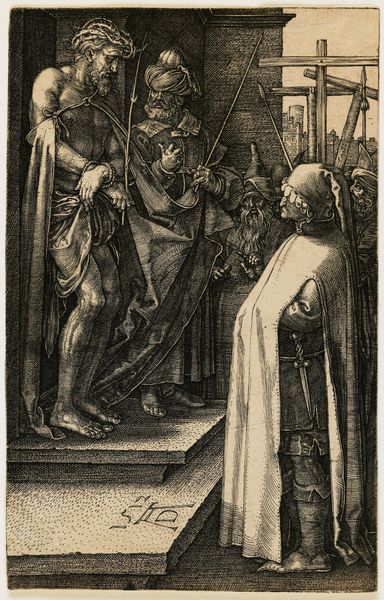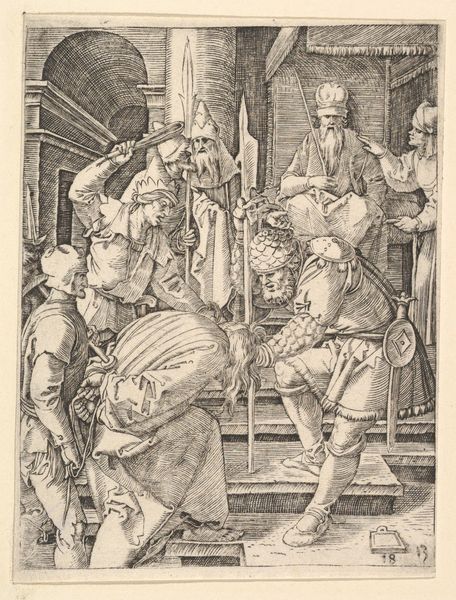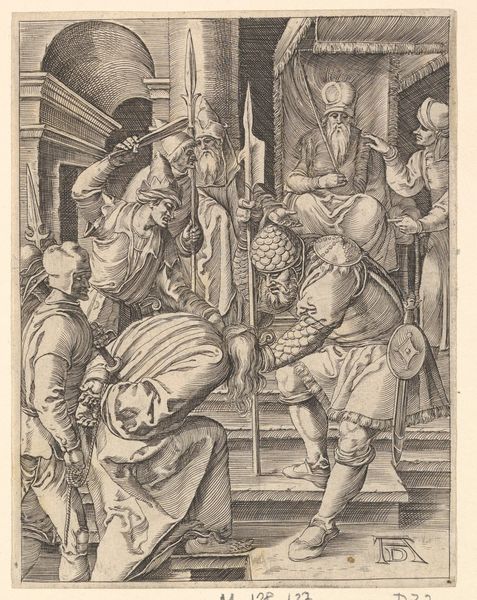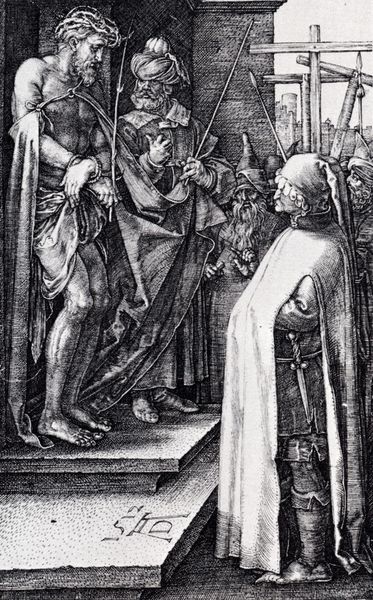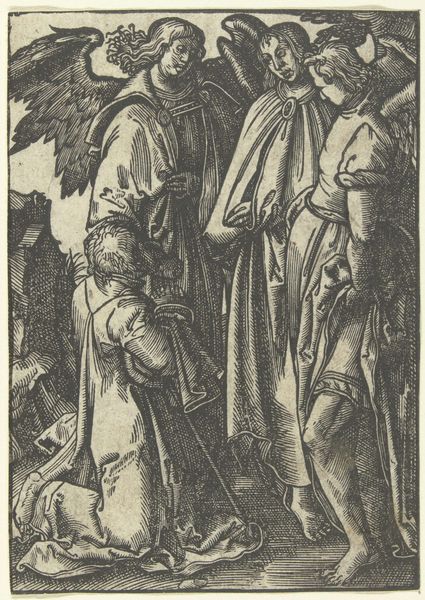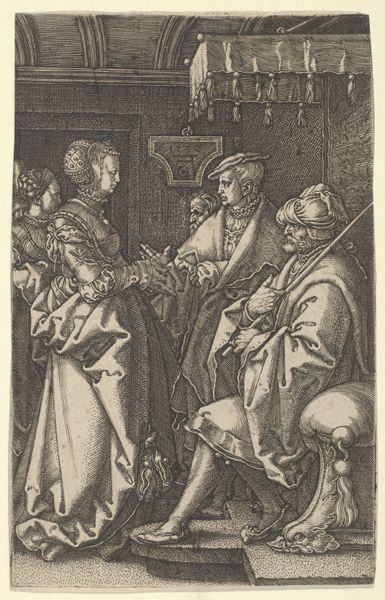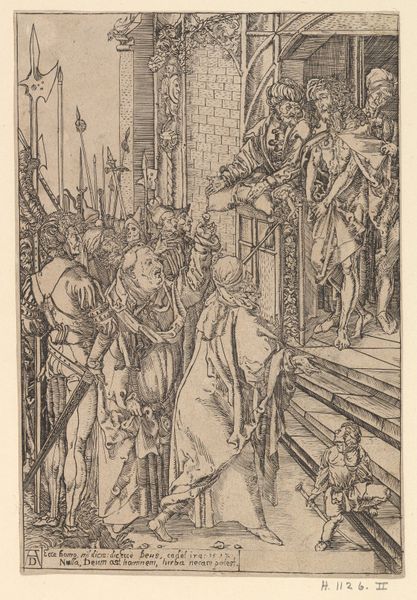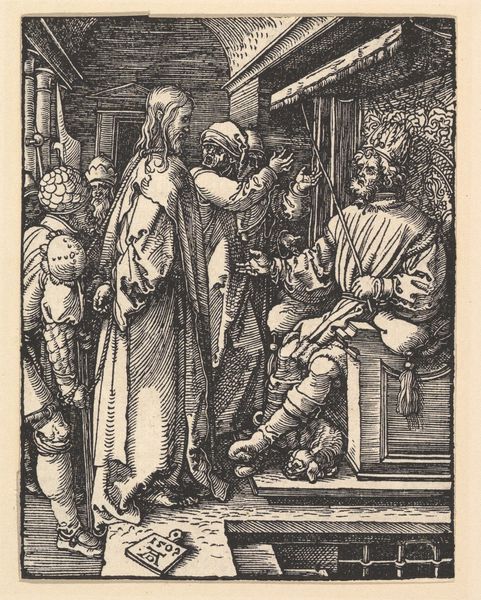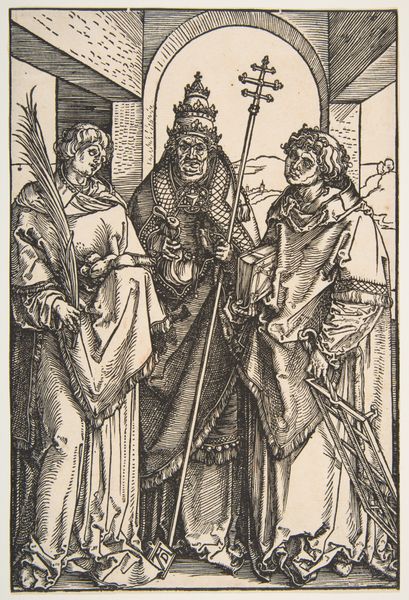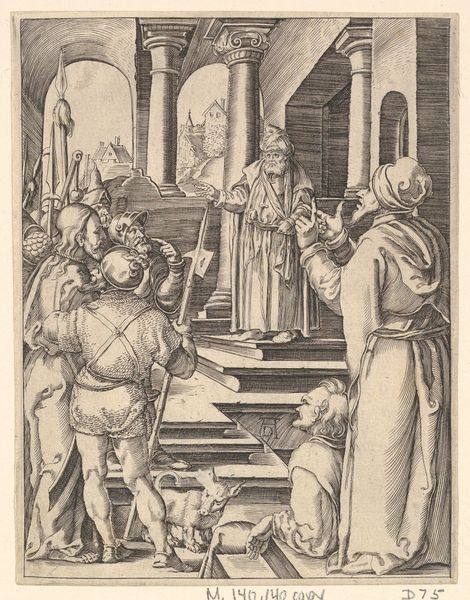
drawing, print, engraving
#
drawing
# print
#
figuration
#
history-painting
#
italian-renaissance
#
engraving
#
christ
Dimensions: Sheet: 4 5/8 × 2 15/16 in. (11.8 × 7.5 cm)
Copyright: Public Domain
Curator: This engraving by Albrecht Dürer, "Ecce Homo," from his "The Passion" series, created around 1512, really showcases the drama and intensity Dürer brought to the woodcut tradition. Editor: It's remarkably bleak, isn’t it? All that grey, the jagged lines...it communicates a brutal scene with unflinching clarity. You can almost feel the cold stone and the coarse cloth. Curator: Absolutely. "Ecce Homo," meaning "Behold the Man," is the moment when Pontius Pilate presents Christ to the crowd. Dürer, being German, understood the significance of making the Passion accessible, not just to the elite, but also to the wider public. His choice of engraving democratizes art and religious instruction in an era defined by upheaval. Editor: That accessibility hinges on Dürer's craftsmanship. Look at how he uses line, density, and texture—how those marks become clothing, flesh, shadow. He uses simple materials to turn what must have been a difficult task into an incredible finished piece, one designed to be reproduced and widely consumed. Curator: The composition, too, invites scrutiny of power dynamics. The architecture subtly dwarfs Christ. He's presented on the steps, the center of attention yet utterly vulnerable, embodying human suffering. Consider the layers of visual interpretation that it demands and how that impacted the social narrative. Editor: I think a good aspect of this piece lies in that vulnerability. He communicates fragility without excessive sentimentality, right? Instead, Dürer forces you to recognize the materiality of this image, its distribution, and impact of religious narrative in daily life. The distribution network for these prints – that's real power in action. Curator: Precisely! This particular image's long history and continued display highlight how art and imagery intertwine with cultural, religious, and political history. Dürer captured more than just a scene; he immortalized a concept that continues to influence our collective consciousness. Editor: Right. "Ecce Homo" isn't just about Christ; it's about the production, replication, and spread of meaning. That Dürer harnessed this moment, using relatively basic materials and tools, for profound artistic impact makes this work quite profound, I think.
Comments
No comments
Be the first to comment and join the conversation on the ultimate creative platform.
